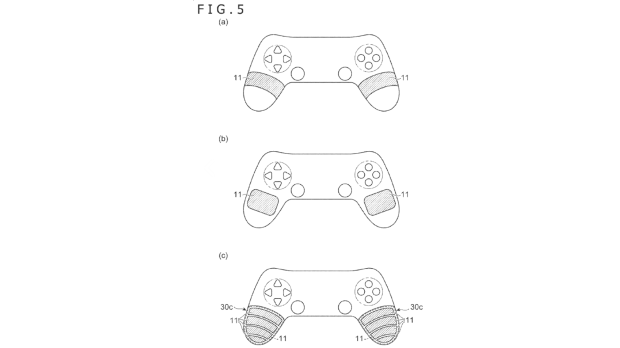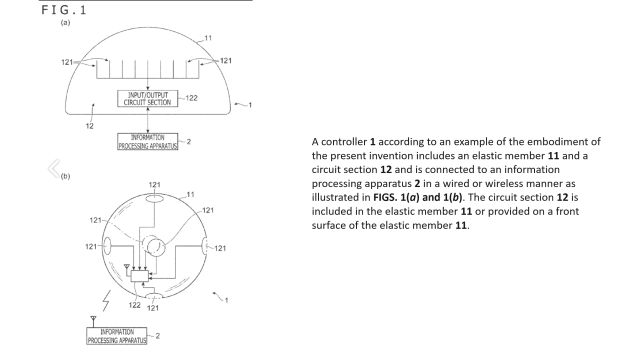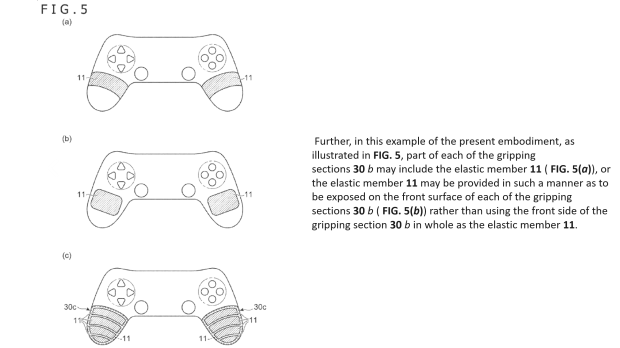Sony has filed an interesting new controller patent that could lead to a next-gen DualSense controller with incredible levels of haptic feedback and input registration.

Note: The following is based on a patent, not a final consumer-ready product. There is a possibility this patent will not lead to an actual product, and the patent does not guarantee that Sony is working on such a device.
Sony's latest PlayStation controller patent is so radical that it sounds like something Nintendo would make. The patent, which was filed in 2020 and only now just published in English, outlines a thermally-reactive controller that has lots of implications for immersion and haptic feedback in PlayStation 5 (or possibly even PlayStation 6) games.
Like any other patent, this one lists a lot of use-cases, embodiments, and possible permutations. There's no one definition as to what the controller is, what it can do, and how it's made. We'll be covering the more interesting bits.
Let's start with the thermal reactivity. The controller features an "elastically deformable silicone-based macromolecular gel" that sends an electric signal based on specific inputs like gripping a controller more tightly, or even twisting the controller in specific spots. The controller could also change color depending on heat.
The controller would pick up on a bunch of different actions from players across varying degrees of sensitivity, including touching, pressing, twisting, pinching/pulling, squashing/crushing, proximity, and rubbing/friction.
Depending on what kind of input that players express onto the controller, the device could react accordingly with generation of specific levels of heat. For example, squeezing the controller could make it slowly heat up similar to Hot Hands, and the same could be true for rubbing, possibly to even emulate the creation of fires in a game. It's possible the controller could also heat up depending on how close you are to a fire in a game.
The controller would also be sensitive to pressure, so squeezing it as hard as you can or attempt to twist or grind the handles could do specific things in a game, or also generate heat.
Below we've taken some of the more salient bits from the patent alongside figures with explanations. Remember, all of this is theoretical and there's no indication that Sony is actually working on something like this to release for a consumer product.

Here, the elastic member 11 includes an elastically deformable material such as a macromolecular gel material, examples of which are silicone-based macromolecular gel materials and urethane-based gel materials, and various elastomer materials, examples of which are polystyrene-based elastomer, olefin-based elastomer, polyvinyl chloride-based elastomer, polyurethane-based elastomer, polyester-based elastomer, and polyamide-based elastomer.
Also, the circuit section 12 includes a sensor 121 and an input/output circuit section 122. Here, the sensor 121 is a capacitive sensor, a pressure sensor, a strain sensor, an acceleration sensor, a temperature sensor, or the like that detects at least one given physical property. The sensor 121 detects user's contact with or deforming action of the elastic member 11 and outputs an electric signal based on the detected contact or deforming action in question to the input/output circuit section 122.
Further, the substance mixed into the material of the elastic member 11 may change its color, for example, under heat. In this example, the circuit section 12 includes a temperature control apparatus and controls the temperature of the elastic member 11.
Also, in another example, a bubble in which gas (e.g., air) is sealed may be mixed in advance into the material of the elastic member 11. In this example, the circuit section 12 may include a temperature control apparatus such as a Peltier element that controls temperature, to change the temperature of the elastic member 11 with the temperature control apparatus in question, thereby control a gas volume in the bubble, and change the shape of the elastic member 11.
Also, the elastic member 11 may include such a material as gel whose elastic modulus or hardness changes under heat, to control the elastic modulus or hardness by change of the temperature with the above temperature control apparatus.
In these examples, the circuit section 12 has the plurality of external field application sections or temperature control apparatuses provided in each section of the elastic member 11 and sets the direction and a strength of an external field applied by each external field application section or the temperature presented by each temperature control apparatus in accordance with an instruction input from the information processing apparatus 2.
Also, a temperature control apparatus such as a Peltier element capable of electrically changing temperature may be provided on the front surface of, or inside the elastic member 11, and the circuit section 12 may set the temperature presented by the temperature control apparatus in accordance with an instruction input from the information processing apparatus 2.
If the controller 1 having this configuration is used, and when the user performs the following or other actions, i.e.,
(1) action of touching the elastic member 11,
(2) action of pressing in part of the elastic member 11 with a finger,
(3) action of twisting the elastic member 11,
(4) action of pinching (action of pinching and pulling) part of the elastic member 11,
(5) action of squashing or crushing the entire elastic member 11,
(6) action of bringing a hand close to the elastic member 11, and
(7) action of rubbing the front surface with a palm or a finger,
it is possible to detect, for example, the (1) action of touching the elastic member 11 and the (6) action of bringing a hand close to the elastic member 11 by using capacitive sensors as the sensors 121. Alternatively, a conductive thread may be sewn into the elastic member 11 for use as the sensor 121, to detect the (1) action of touching the elastic member 11 and the (6) action of bringing a hand close to the elastic member 11 by detecting a capacitance change with this conductive thread.




